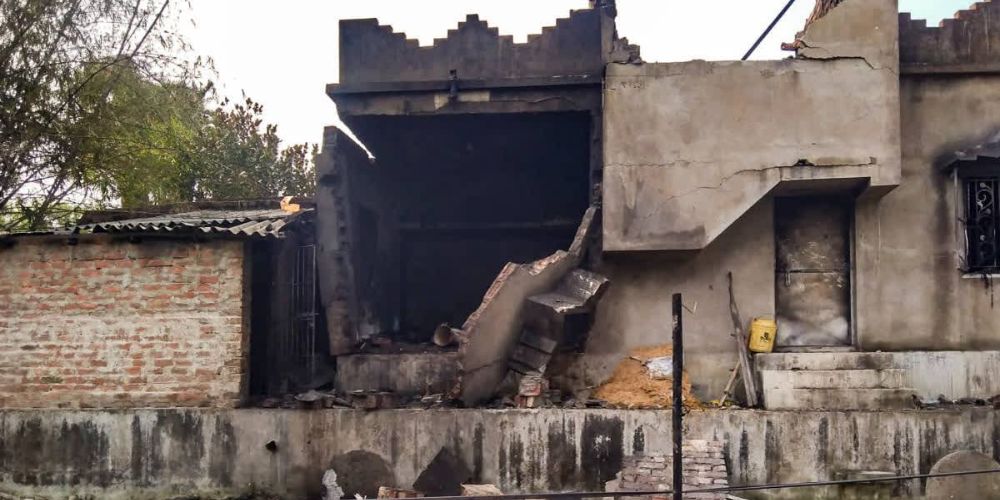Introduction
The tragic firecracker godown blast in Banaskantha, Gujarat, has claimed 21 lives, raising serious concerns about fire safety regulations and hazardous material storage. The explosion, which shook the region, has left families devastated and authorities scrambling to investigate the cause. As rescue operations continue, the incident highlights the urgent need for stricter enforcement of fire safety laws in storage and manufacturing facilities dealing with explosive materials.
Firecracker-related accidents are not uncommon in India, especially in areas where safety measures are lax. The Banaskantha firecracker godown blast serves as a grim reminder of the dangers posed by improper handling and storage of highly combustible materials. With the death toll rising, questions are being raised about compliance with safety protocols and the accountability of those responsible for the facility’s operations.
The Banaskantha Firecracker Godown Blast: A Deadly Tragedy
The explosion at the firecracker godown in Banaskantha resulted in a massive fire that engulfed the surrounding area, leading to loss of life and injuries. Initial reports suggest that the blast was triggered by the mishandling of explosive materials, but a full investigation is underway to determine the exact cause. Eyewitness accounts describe a horrifying scene of destruction, with firefighters and rescue teams working tirelessly to control the blaze and recover victims.
Authorities have confirmed that the death toll has risen to 21, with several others critically injured. The injured are receiving medical treatment at nearby hospitals, with doctors struggling to manage the severity of burns and trauma cases. As families mourn their loved ones, officials are facing mounting pressure to ensure such tragedies do not recur.

Safety Violations and the Need for Regulatory Oversight
The Banaskantha firecracker godown blast has exposed serious lapses in regulatory oversight. In many cases, firecracker storage facilities operate without adhering to strict safety guidelines, increasing the risk of catastrophic accidents. Experts have pointed out that firecracker manufacturing and storage require stringent safety measures, including controlled environments, fire suppression systems, and proper licensing.
Despite existing laws governing the handling of explosive materials, enforcement remains weak. Many small-scale firecracker units and godowns function in congested areas without adequate precautions. The Banaskantha blast raises concerns about whether the facility was operating legally and whether authorities conducted regular inspections to ensure compliance with safety standards. The disaster underscores the urgent need for regulatory bodies to conduct thorough inspections and penalize those who violate safety norms.
Impact on the Local Community and Industry
The explosion has had a devastating impact on the local community, with families losing their loved ones and businesses suffering financial setbacks. Firecracker production and storage facilities are often located in densely populated areas, increasing the risk of collateral damage when accidents occur. The Banaskantha firecracker godown blast has not only caused loss of life but has also disrupted livelihoods, as several workers at the facility were reportedly killed or injured.
The incident has also sparked discussions about the future of the firecracker industry in India. While firecrackers are a major part of cultural and religious celebrations, concerns over environmental pollution, child labor, and safety hazards have led to calls for stricter regulations. The Banaskantha tragedy is likely to intensify the debate on whether alternative, safer methods of celebration should be promoted to reduce dependency on hazardous firecrackers.
Conclusion
The rising death toll in the Banaskantha firecracker godown blast is a stark reminder of the dangers posed by inadequate safety measures in the handling of explosive materials. As investigations continue, it is crucial for authorities to hold those responsible accountable and implement stricter enforcement of fire safety regulations. The tragedy should serve as a wake-up call for policymakers, industry stakeholders, and the public to prioritize safety and prevent similar disasters in the future.
For More News Update –Dailynewfeeds



